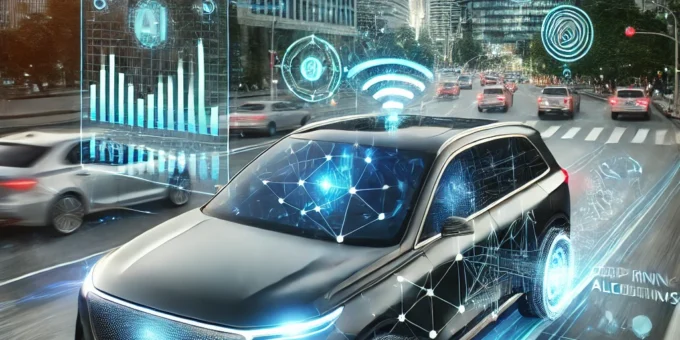
Introduction
Imagine a world where your car drives you to work while you sip coffee and read the news. AI is making this vision a reality through self-driving cars. The rise of autonomous vehicles is a technological revolution that is redefining the way we commute, making roads safer and transportation more efficient. But how exactly does AI power self-driving cars? Let’s dive in.
The Role of AI in Autonomous Vehicles
Machine Learning & Neural Networks
AI in autonomous vehicles relies heavily on machine learning (ML) and neural networks. These systems allow cars to analyze vast amounts of data, recognize patterns, and make real-time decisions based on previous experiences.
Computer Vision for Real-Time Navigation
Using AI-driven computer vision, self-driving cars detect objects such as pedestrians, road signs, and other vehicles. This enables them to navigate complex environments without human intervention.
How Self-Driving Cars Work
Sensors & Data Collection
Autonomous cars use sensors like LiDAR, radar, and cameras to map their surroundings. These sensors collect real-time data to create a 3D model of the environment.
Decision-Making Algorithms
AI-powered algorithms process sensor data to make split-second driving decisions, such as stopping at a red light, changing lanes, or slowing down in traffic.
Key AI Technologies Powering Autonomous Vehicles
Deep Learning in Autonomous Vehicles
Deep learning models help self-driving cars understand their surroundings by analyzing images and videos from onboard cameras.
Sensor Fusion Technology
AI integrates multiple sensor inputs to improve vehicle perception, ensuring accurate obstacle detection and decision-making.
Natural Language Processing (NLP) for Voice Commands
Some autonomous cars incorporate NLP to allow drivers and passengers to interact with the vehicle using voice commands.
Benefits of AI in Self-Driving Cars
Enhanced Safety Features
AI minimizes human errors, reducing the risk of accidents caused by distractions, fatigue, or impaired driving.
Reduced Traffic Congestion
Autonomous vehicles communicate with each other, optimizing traffic flow and reducing congestion.
Fuel Efficiency & Environmental Impact
AI helps vehicles choose the most efficient routes, reducing fuel consumption and emissions.
Challenges & Limitations
Ethical Dilemmas & AI Decision-Making
AI faces ethical challenges, such as deciding who to protect in an unavoidable accident.
Technical & Infrastructural Barriers
Widespread adoption of self-driving cars requires improved road infrastructure and high-speed data networks.
Cybersecurity Concerns
Autonomous vehicles are vulnerable to hacking, which poses security risks to passengers and data privacy.
The Future of AI in Autonomous Vehicles
Advancements in AI Algorithms
Future developments in AI will enhance the accuracy and reliability of self-driving technology.
Integration with Smart Cities
Autonomous vehicles will be integrated with smart city systems, enabling seamless transportation networks.
The Role of 5G in Self-Driving Technology
The implementation of 5G will allow self-driving cars to process data faster, improving overall efficiency and safety.
AI is transforming the automotive industry, bringing us closer to a future where self-driving cars are the norm. While challenges remain, ongoing advancements in AI, infrastructure, and cybersecurity will pave the way for safer, more efficient transportation. The journey toward fully autonomous vehicles is just beginning, and AI is the driving force behind this revolution.